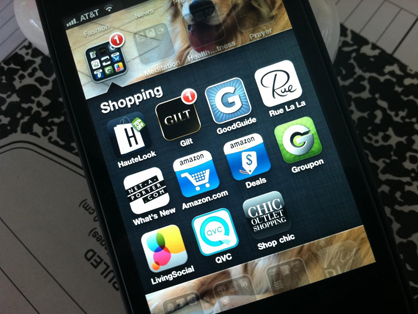Mobile commerce is the new future of retail
Retailers are looking forward to a new future, one that is mobile, focused and individual. Participants gathered at the 2011 World Retail Congress to hear this message of what the future holds: holistically connected multichannel retail space, reported WWD.
Considering the current economic woes, the mood was surprisingly more energizing than dismal.
According to surveys introduced at the three-day affair, sales in physical stores still have life in our digital age, with even more hard-core online fans agreeing that brick-and-mortar has a place in tomorrow’s industries. In order to maintain that life, the market needs to hone in on private brands featuring distinct profiles and harness technology to enable a greater range of merchandise available, even in smaller shops.
“Make your smallest store your largest store by having complete access to your assortment online, at the store,” Myer Ltd. CEO Bernie Brookes said to WWD.
The most common chant: Get to know your customers. But transforming the deluge of available information into usable data to learn their preferences presents a puzzle. Originality and innovation, once looked at as fringe benefits, have become a central piece in developing a brand.
“We can say with confidence that mobile is indeed the next engagement platform for shoppers,” stated Alan Threadgold, head of retail strategy for Leo Burnett.
A recent study of 4,200 British and American consumers found 50 percent of U.K. shoppers would like to make use of their mobiles devices when shopping digitally, whether scanning bar codes to obtain product info, accessing shopping lists or purchasing through applications.
“The mobile phone and the ability to use it in your commercial decisions adds a whole other level,” Matt Brittin, Google managing director, U.K. and Ireland, declared. “It’s a huge change. If you’re not present on mobiles, it’s like having your shops closed on Tuesdays, because that’s the amount of people who are coming to look for you and you aren’t there.”
Brittin approximates that in five years, 5 billion individuals will have Internet connection through their phones. Already 20 percent of all searches on Google are done using smartphones.
Warnaco Group Inc. president and CEO Joe Gromek is on the same page. “It’s absolutely necessary we all understand and have a plan to take advantage of the new technological developments involving mobile and what’s to come,” he told WWD. “In the States, we’re still primarily oriented towards e-commerce versus mobile commerce in the rest of the world — possibly because we’re landline locked. But we have to move forward faster.”
After surveying shoppers early 2010, Debenhams found customers claimed to lack interest in the store going mobile. The company proceeded with its mobile plans anyway, creating an iPhone app that in nine short months generated 700,000 downloads, with the retailer pulling off $3.9 million in sales. Surveying shoppers a second time the next year, mobile availability was in the top 10 things they desire most from the store.
Private brands featured huge at the congress. “Europeans are now recognizing their time to differentiate themselves with exclusive brands. It’s a big opportunity — for both retailers and the supply side,” Rick Darling, president of Li & Fung USA, said.
While retail is becoming increasingly global, the local is a growing focus.
“One of the things that has to be dealt with is how to become hyper-local. Retail has become so homogenized, it’s a question of bringing individuality back to the local store. It’s a small wave, perhaps, but it’s the next wave,” said Matt Rubel, senior adviser, TPG Capital. “You have to empower management at the store level, giving them the ability to make choices in assortment at the local level.”
Tagged in: digital, mobile, future, world retail congress, retailer,

LadyLUX



